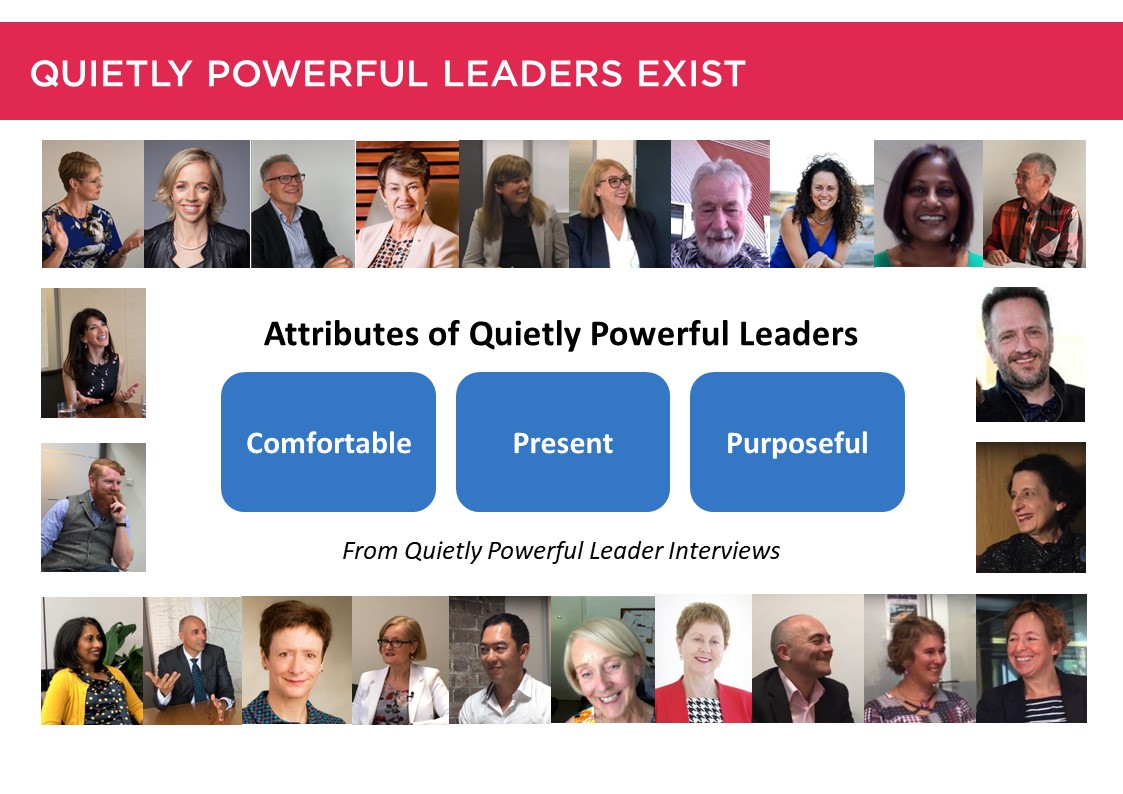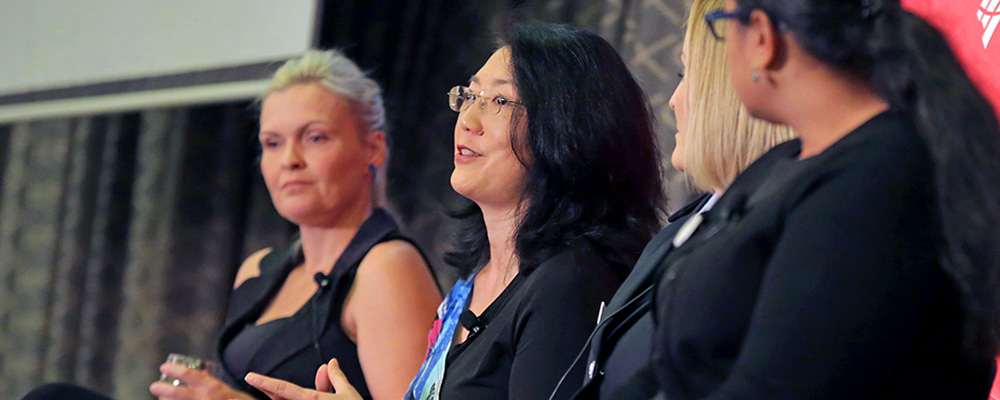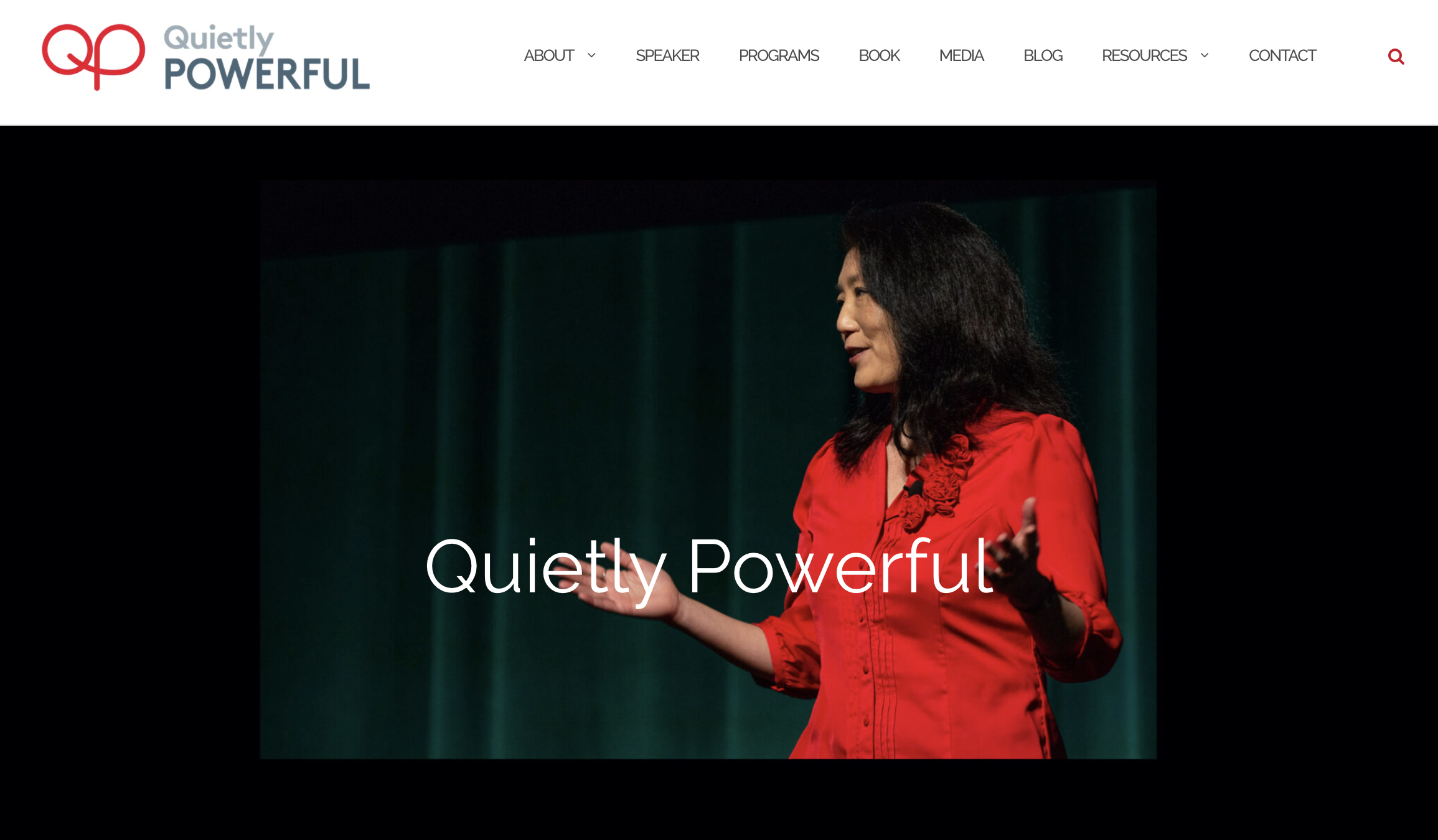My Blog
Quietly Powerful Leaders – who are they and why we don’t have enough of them
- Details
- Posted: 04 December 2018
Since starting the Quietly Powerful movement just over 2 years ago I have had the pleasure of interviewing 24 Quietly Powerful leaders so far, to understand what makes them quietly powerful and how their natural tendencies have been their leadership strengths (join the Quietly Powerful LinkedIn Group to access the recorded interviews). A few patterns started emerging, which I have been sharing more of in my talks.

The key attributes I have noticed in the leaders I interviewed include:
Comfortable with themselves: They know themselves well and are comfortable with their strengths and weaknesses. Some are very transparent about their weaknesses, others surround themselves with people who are good at what they are not. Humility comes naturally as a result. They have an inner confidence that allows them to say that they don’t know everything and laugh at their weaknesses. Because these leaders are authentic and human, people around them feel more comfortable with them.
Present: They have a quietly powerful presence because they are present. They don’t speak unnecessarily. They connect deeply, often 1-1 and many have mentor and collegial relationships that have lasted for decades. They are present because they are comfortable within themselves, have learned to manage their anxieties and/or focus their attention on others. By being present, they listen, observe and make connections that others may not see.
Purposeful: They prefer not to seek attention on themselves, so they go into roles that attract attention, such as senior leadership roles, for a purpose. These senior leaders want to make a difference and fulfil the organisation’s mission. There are also thought leaders and experts who want to help others with their message. You see them promoting their team’s work, the organisation and people they serve more than themselves. They are also inclusive in the true sense that they involve a variety people who can contribute to the work, regardless of seniority, background or style.
Quietly Powerful Leaders use their naturally quieter tendencies as leadership strengths and continue to develop skills and attract people around them to fulfill their worthwhile missions.
Similar ideas have been written about for quite some time… for example:
- Servant leadership by Robert Greenleaf – first published in 1977
- Level 5 leadership in Good to Great, Jim Collins, 2001
- True North: Discover your authentic leadership by Bill George, 2007
- Leaders eat last by Simon Sinek, 2014
- Lead yourself first: Inspiring leadership through solitude by Raymond Kethledge and Michael S. Erwin, 2017
- The best bosses are humble bosses, Wall Street Journal article by Sue Shellenbarger
- Business Insider Australia article stating that London Business School is looking for humility and curiosity as important in candidates
- Mindful leadership by a number of authors and articles such as 5 Simple and Compelling Behaviors of Mindful Leaders in Forbes
- Bye-Bye, Heroic Leadership. Here Comes Shared Leadership, Forbes article by Carsten Tams
We want these leaders but we don’t seem to have many of them (see HBR article If humility is important, why are leaders so arrogant? and We all want leaders who listen. So why don’t we have more quieter leaders?). Of course, some of these leaders exist already, but they are overshadowed by the ineffective and sometimes problematic ones.
There is still a gap between the leaders we say we want and the leaders we end up with…
… and we have not been able to break this pattern. Is it possible that we’re missing something? I believe we are overlooking potential Quietly Powerful Leaders and it is keeping us stuck.
Organisations routinely overlook potential Quietly Powerful Leaders because they don’t fit the traditional – alpha, charismatic, dominant – style of leadership. (see How organisations and leaders crush diverse talent without realising)
In addition, we – not just people who select the leaders - can fall into some traps:
- We get mesmerised by charisma
A phenomenon called the “awestruck effect” has been researched, where we are awestruck by charismatic leaders, hero’s and entertainers such that we lose our capacity to think rationally. As a result, we can be more easily manipulated, such as mistaking confidence with competence when interviewing a smooth-talking candidate.
Unfortunately, charisma can also mask narcissistic and psychopathic tendencies. There is also research that indicates that people who crave power and attention are more likely to turn narcissistic when they gain power (see It’s official: Power creates a narcissist by University of Melbourne).
- Time poor and quick decision making
When we are time poor and under pressure, we may miss things as we rely on default thinking which is riddled with biases. We may make judgements based on first impressions or not ask enough questions to get past surface and get to know the substance. We feel comforted by leaders who appear to be confident and give clarity.
- Choose comfort, fit and style over difference, misfit and substance
We look for ‘cultural fit’, people who ‘are on the same page’, ‘like-minded’ people, people we get along with, people who look, sound and feel like us. With the pressure to get results, it is natural to choose this comfort. Over time, however, we miss the opportunity that different styles and thinking brings to teams and organisations (see white paper: Rethink diversity for competitive advantage and many other papers on the value of diversity such as Delivering through diversity by McKinsey).
- We pay more attention to visible, attention seeking self promoters
We are also plagued by short attention spans due to feelings of time pressure, busy-ness and world of distractions. It is easier to pay attention to what is visible in front of us. It takes a lot to attract and retain people’s attention. It has resulted in a lot of focus on self-promotion, visibility, personal brand and image in the workplace. These are not necessarily bad, but they do focus more on what’s on the surface and less on what’s behind the image. Quality and substance may not be visible enough.
- Quietly Powerful Leaders have to be found
We often don’t look for and pay attention to people who don’t quite fit the usual mould of good leadership, who may not be so visible, who may not always have a good first impression. These potential leaders generally do not toot their own horn, but quite often, they share ideas or achievements of their team and colleagues. Others often speak highly of them, when asked. If you are not noticing these people, it is very likely that you are overlooking your potential quietly powerful leaders.
In my next article I will share my and others’ perspectives on why we need more quietly powerful leaders now, more than ever. These discussions, research and articles are leading up to a white paper and eventually a book. If you’d like to be kept informed about them, please sign up for the Quietly Powerful newsletter, if you haven't already.
Related articles
The definition of what good leadership looks like needs an update
Do you have to be an extrovert to get ahead?


